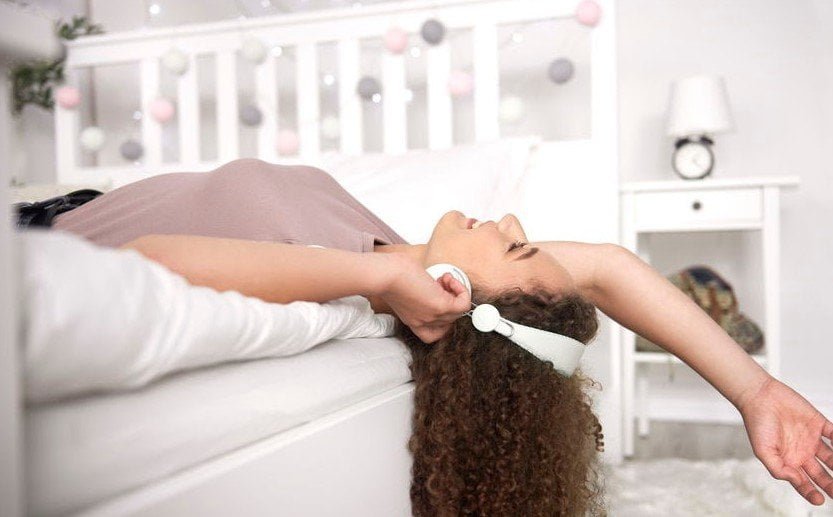Many migraine sufferers soon come to realize that medication is not the only way to help manage the symptoms. Stress management, which includes performing numerous relaxation techniques, e.g., meditation and breathing go a long way in helping to prevent and treat migraines.
If you regularly suffer from migraines, there’s a need to make sure that you take proper care of yourself. This includes learning what to do when a migraine decides to strike out of the blues. With migraines, you will note that the same lifestyle choices that are known to promote general well-being can also assist in reducing the severity and frequency of your symptoms.
In fact, the best way to go about managing its symptoms is to know how to combine medication with behavioral and lifestyle changes. This is perhaps the best way to handle the headaches. The following is a look at 5 relaxation techniques recommended by the BTX migraine center that can assist you to manage the migraines when they do occur:
1. Find a Calm Environment
When you experience the first signs of an oncoming migraine, the ideal thing to do is to retreat from your day-to-day activities. As soon as you have retreated, do the following:
- Turn off all the lights in the room. A migraine tends to increase your sensitivity to sound and light. If possible, try to relax in a quiet, dark room.
- Consume a caffeinated beverage. When taken in small amounts, caffeine can assist in relieving some of these symptoms. It’s more effective when taken during the early stages, or when ingested together with aspirin.
- Try temperature therapy. This involves applying cold or hot compresses to your neck or head. Icepacks help to numb the pain sensation while heating pads and hot packs assist in relaxing your muscles.
2. Sleep Well

If you are looking for tips on how to ease migraine pain, note that a migraine can easily make it impossible for you to fall asleep. This is in addition to causing you to wake up in the middle of the night with a throbbing headache. Also, note that migraines can also occur when you have not slept well for a few days. To encourage better sleeping patterns, consider these tips:
- Don’t try too hard to fall asleep. When you try too hard, the more alert you start to feel. If you’re completely unable to fall asleep, try to engage in another activity such as reading.
- Establish a regular sleeping pattern. You have to come up with a good sleeping schedule. This calls for you to ensure that you go to bed and wake up at the same time every day, including during weekends. If you have to take a nap during the day, try and make it short. Your nap should not exceed 30 minutes.
- Check your current medications. Any medication containing stimulants such as coffee may come in the way of your sleeping schedule.
- Minimize distractions. Here, you will need to keep a close eye on what you do while in the bedroom. Your bedroom at this stage is meant for intimacy and sleep purposes. Do not bring work with you or even try to watch television when in bed.
3. Eat Wisely

Your diet and your eating habits have a great influence on the frequency and severity of your migraines. When it comes to eating, you will need to go back to the basics:
- Avoid any food items that can trigger your migraines. You need to stay away from any foods you believe have the potential to cause migraines, e.g., alcohol, aged cheese, caffeine, or chocolate. If you are sure that one of these food items is a trigger, eliminate it from your daily diet.
- Consistency will be important. This calls for you to try and take your meals at the same time each day.
- Maintain a food journal. The journal will help you keep a record of all the foods that you are ingesting. Updating it daily helps you to pinpoint potential triggers.
- Don’t skip your meals. When you fast, you increase your chances of experiencing a migraine.
4. Botulinum toxin A BTX-A Injections
The botulinum toxin A BTX-A injections have also been tested to determine whether they can assist in treating migraines. The studies that have so far been conducted to establish its efficacy have not demonstrated any benefit of using BTX to manage migraine symptoms. Results have indicated substantial reductions in the frequency of the migraines, but, so far, there has been no significant statistical difference.
5. Manage Stress

If you’re a migraine sufferer, you probably know by now that migraines go hand in hand with stress. While its practically impossible to avoid daily stress, there’s a need to try and keep it under control. It’s the only way to manage its symptoms. You can do this by:
- Relaxing. Try to take a deep breath from the diaphragm. You will need to maintain your focus on the process of breathing in and breathing out. Ensure your inhalation is slow and deep. Try to do this for at least ten minutes each day.
- Make your life simpler. Instead of trying to look for new ways to incorporate activities into your life, you should try and get rid of some of the things that could be stressing you.
- Make an attitude adjustment. You need to take on a positive outlook on life. Switch gears immediately once you find yourself beginning to have negative thoughts. Nothing is impossible so long as you put your mind into it.
Summary
If you have already started experiencing migraines, then you already know how challenging it is to deal with the symptoms. There are instances where you may find yourself missing work or school due to severe headaches. With the above techniques, you should be able to control the symptoms to allow you to enjoy your life to the fullest.







